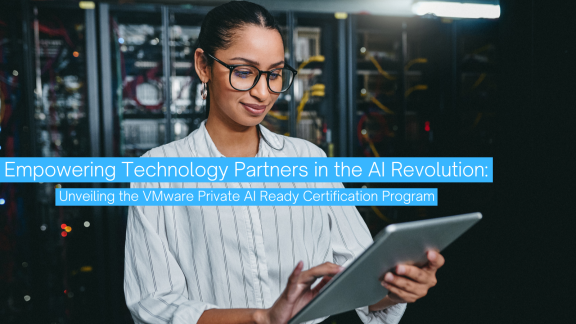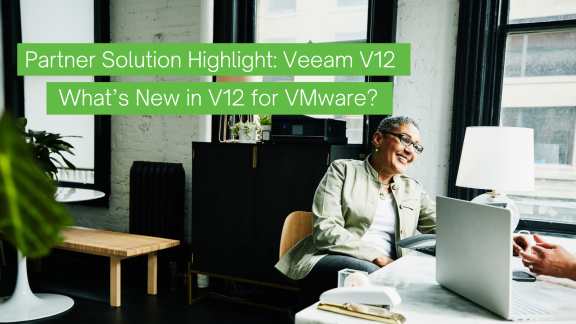With all the Customer enthusiasm for virtualization over the last several years, and now cloud computing, many ISVs are asking VMware: “what’s in this for me”! While that answer may be obvious to many ISVs, for others the question is not so readily answered. Here we’ll reduce the exploration of this answer down to a single Customer perspective/starting point: “I want your applications delivered to me as easily, quickly, and effectively as possible”.
ISV applications, Delivered
What is new about application delivery in the context of virtualization and cloud computing? Potentially everything: ISVs have the ability to re-think the way their applications are assembled & distributed to Customers (as well as partners), facilitating new business models as well as entirely-new mechanisms for updating and enhancing their applications delivered to Customers at some point in the past. Conversely, ISVs can opt to change nothing, yet still provide Customers enhanced access to ISV-built applications.
Options, Delivered
VMware has seen an interesting and lucrative expansion of the options available to ISVs as virtualization and cloud computing have accelerated over the last 5+ years. We outline many of those in the ISV Application Delivery section of vmware.com; a few specific options include:
- Applications validated for basic virtual deployments
VMware’s vSphere platform provides a standardized HW platform that ISVs can “bank on” – with 50+ certified Operating System (OS) offerings that cover essentially all Customer requirements, ISVs can focus on certifying their applications to known OS platforms, and leave the complexity of server, storage, network, and other hardware-related issues to VMware vSphere. Configuration issues are abstracted away. Thousands of applications have already proven the value of this platform for Customers – and by design, your applications should run just as easily on vSphere as they do on native hardware platforms. Customer benefit: consistency of deployment. No more concern for whether server X or storage platform Y will work with your specific application. - Applications standardized into virtual applications or “vApps” that go beyond the basic appliance
ISVs have been packaging hardware appliances for years, and with good reason: they provide a simple approach to providing Customers specific functionality in a controlled package. Of course, with VMware ISVs have the identical option, only without the need to include the expensive hardware package that appliances typically include. With freely-distributable OS options such as Linux, ISVs are at liberty to create either simple – or increasingly complex – combinations of applications and (perhaps more importantly) pre-configuration of those applications to Customers in easy-to-install & launch packages, tightly-controlled by the ISV. Imagine the luxury of delivering your multi-tier application to a Customer, and their installation requires nothing more than a few mouse-clicks! This is highly-compelling, and an option ISVs are now beginning to explore in volume. The driver of this, of course, is the Customer – and their desire to see simplified deployment & management of both simple as well as increasingly-complex ISV application infrastructure. - Applications reconfigured for delivery in the cloud
Here we’re talking about the future – and this is where many ISVs have a genuine challenge when they think about extending their applications into a Software-as-a-Service (SaaS) model. It’s not just about code architecture; this is about a fundamental shift in how software is sold and delivered to end-Customers. Yet, VMware is working with ISVs to ensure that the evolution of classical on-premise applications to the cloud is based upon a balance of Customer requirements, technical obligations, and perhaps most important, a business model that works for the ISV involved in this kind of transformation.And the good news is that this is not an all-or-nothing discussion. Many ISVs find that they can begin the migration to the cloud by extending new or trial product offerings in this manner – what a great way to test the waters for a new product! Basic SaaS offerings can be easily changed, extending new features (or, conversely, the removal of unneeded features) to Customers simultaneously. For some ISV product managers, this is a dream come true: no need to worry whether all your Customers are on the right release or not; no need to worry about whether their specific configuration of your application with their hardware has been accomplished to deliver the performance you have promised. With SaaS, the ISV takes control of the Customer experience – EVERY Customer experience – and has the ability to ensure that the product features and attributes that matter are quickly presented to Customers for their immediate benefit, world-wide.
Options, Considered
Customers, ISVs, and the industry at large are in the midst of a substantial re-consideration of Customer expectations for application delivery. We have only scratched the surface in this posting – there are so many other trends emerging: Desktop-, Platform-, Application Server-as-a-Service; cloud deployments of on-premise applications; shared infrastructure across hybrid cloud service offerings. What do these trends mean for ISVs? VMware obviously has a considerable list of solutions for these scenarios, and we hope to serve as a trusted advisor for ISVs, with a joint-focus on purposeful application delivery to end-Customers.
Please consider the resources VMware has prepared for ISVs, and consider your options. Customers are already making decisions regarding application infrastructure based upon new delivery models. We think our solutions will help you attract new Customers, while enabling your existing Customer base to migrate the existing business value they derive from your solutions, ideally with simplified means of achieving the same business objectives.
Continue to watch this blog and our ISV Application Delivery page as we explore these options further



